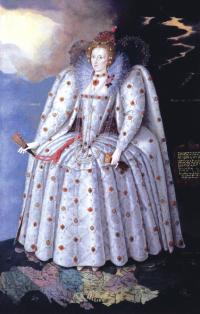The power behind the throne?
Published in Early Modern History (1500–1700), Features, Issue 6 (Nov/Dec 2012), Volume 20
Queen Elizabeth I—to what extent was Cecil the true power behind the throne? (National Portrait Gallery, London)
For 40 years (1558–98) Queen Elizabeth I was served by William Cecil, later Lord Burghley, first as principal secretary, later as lord high treasurer, and throughout as an active member of her privy council. Yet there has been a hesitancy to look beyond Elizabeth. Here is a monarch who enjoyed one of the longest reigns in early modern Europe and is widely regarded as one of the most successful rulers of the age. Her name is synonymous in England with a time of national achievement and a great flourishing of exploration and literature. She is a national heroine: in 2002 the British public voted her seventh on a list of ‘greatest Britons of all time’. Not bad for a woman who died 399 years before the votes were cast! Here also is a successful woman who defied all odds and succeeded in an age dominated by men. To ask whether behind ‘Gloriana’—whose iconic face has launched if not a thousand ships then thousands of books by appearing on thousands of dust-jackets—lay a grave, colourless but all-controlling man may be construed as an attempt to reawaken the chauvinism of earlier times, an effort, perhaps, to turn on its head the popular saying that behind every great man is a great woman. Still, it is important to subject Elizabeth to the same scrutiny as other key historical figures.
If Elizabeth’s success and the extent of Cecil’s role in it remain the starting point for these reinterpretations of the reign, what of the queen’s failures? It stands to reason that if Cecil is accorded a larger part in the success of Elizabeth’s reign then he must also assume a commensurate responsibility for its failures. And there was no greater failure than in Ireland. For Irish historians the queen’s name conjures up images not of a golden age but one of expropriation, destruction and conquest. The ‘Elizabethan conquest of Ireland’ is a period which has long served as an emblematic instalment in the ‘800 years of English oppression’ that, for some, is a defining feature of Ireland’s history and England’s place in it. If William Cecil were shown to be the true power behind the throne, then he must answer for Ireland—the ‘Elizabethan conquest’ might have to give way to the ‘Cecilian conquest’ of Ireland.
















